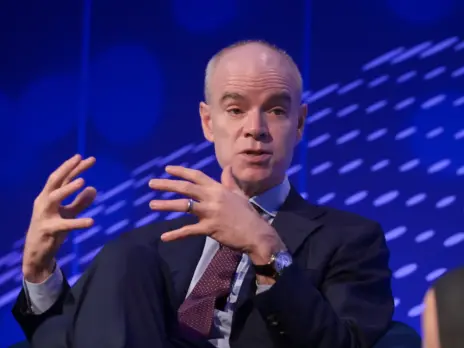
Times digital editor Alan Hunter says that “keeping subscribers happy” is the “core of what we do”.
He spoke to Press Gazette as The Times tinkered with its paywall by offering a small amount of content free to registered readers.
He told Press Gazette the decision to create three daily editions for Times subscribers – ushered in with an app relaunch at the end of March – is what has helped draw readers back to its content.
The change to edition-based digital publishing came, he said, after readers complained of being overwhelmed by the amount of rolling news and of wanting more context as to which stories were important.
The deadlines of 9am, midday and 5pm were established around natural peaks in online activity.
Said Hunter: “The essence of building successful digital products is in habit, so you have to have a habit to get people coming back.
“We think that having these fixed times is when people will know they want to come back because they accord with times that are important to people in their day anyway.”
The Times titles posted a combined pre-tax profit of almost £11m for the 12 months to the end of June last year.
In 2014 Times Newspapers reported its first operating profit for 13 years despite having been widely panned, in particular by former Guardian editor Alan Rusbridger, when it first put up its paywall in 2010.
The Guardian, which operates a free model with optional membership, recorded operating losses of £69m for the year to the end of March. In May it had more than 9m average daily website visitors.
Lessons learned over the six years of operating a subscription-based online model at The Times and Sunday Times include not undercutting print with low-cost digital access, according to Hunter.
“Broadly speaking one of the lessons is make sure you don’t cannibalise your print sales by making your digital offering too cheap. Billing is also a very difficult thing to get right,” he said.
One of the biggest changes from a free to subscription-based model was a “change of ethos”, added Hunter.
“You need to really serve your customers digitally – they’re not just casual buyers, they are subscribers.
“That is a big responsibility for us as the Times and the Sunday Times, to make sure our relationship with them at every point in their time with us is befitting of the standard we set in our journalism.”
He said The Times and Sunday Times has 413,000 subscribers across print and digital, of which 182,000 are digital-only subscribers.
Daily web traffic is less of an immediate concern for Hunter than his counterpart at The Sun, which finally scrapped its paywall in favour of a free model in October.
He said: “Our real focus is in pleasing our subscribers. That’s all we want to do.
“We also want to please advertisers but if we keep our subscribers happy then that’s the core of what we do.
“So we’re looking at how often people return to the website and the smartphone app and how much they’re reading when they get here.”
Since launching the new app, weekday visits have gone up by 20 per cent, he said, while page views on the smartphone app have gone up by a quarter compared with the old app.
“What we’re saying is if you focus really hard on the quality of your journalism, people are prepared to pay for it – and not just in specialist areas, such as that in which the Financial Times operates,” said Hunter.
“People say that behind a paywall you’re hidden away but the Sunday Times investigation’s into blood doping in the past year has clearly set the agenda for Russia having some of their athletes excluded from the Olympic Games.
“These are stories that echo around the world and that is what the Times and Sunday Times do very well and people are clearly prepared to pay for that.”
Asked if the team had “cracked it” with the subscription model he said: “We would never say we’ve cracked it because this is a very fast moving environment where things change very quickly.
“The past year has seen Facebook rise very high in people’s minds and we’ve had Apple coming into the game and Google producing AMP (Accelerated Mobile Pages), so there’s lots of different things happening that continue to have an impact on our business and our business model.
“We are very pleased with the way things are going at the moment, but we are not complacent.”
Last month the Times introduced “registered access”, giving people who sign up to the website the chance to view two articles for free per week.
It’s a small crack of light in an otherwise solid paywall – with access to digital content costing from £6 a week.
“One of the reasons we have introduced registered access for readers on the web titles is because we want to increase our number of subscribers and we are constantly looking at how we tinker with the subscriber funnel to get more people in.
“We do experiments like this all the time.
“We recently started allowing our subscribers to share full articles from our tablet edition and that’s worked very well for us and got many, many more people reading our content and then going on to subscribe.”
Another experiment came during the EU Referendum, when the Times dropped its paywall on the day of the result of the vote. It paid off, with subscriber numbers rising “dramatically” on the weekend after the referendum, said Hunter.
Across the board, newspapers and TV channels have seen a boost in figures thanks to the Brexit effect.
Said Hunter: “It was a huge day in British history and we thought that as an element of public service, and as an experiment, we would drop the paywall for a day – to show people the quality of our journalism on a day when people naturally turned to the Times.
“I think people come to us for big news events – we see that in newspaper circulation – and we think we can bring something different. “
These kind of tactical experiments look set to continue as the Times and Sunday Times aim to entice more readers into paying for regular access to its content on whatever platform that may be.
“We are going to look carefully at what has happened [following the Brexit vote] and what is happening subsequently,” said Hunter.
“As far as we’re concerned people are buying a subscription to read us on all platforms.
“Our point of view is that these people are paying subscribers, we give them the content everywhere, they choose where they want to read it.”
Email pged@pressgazette.co.uk to point out mistakes, provide story tips or send in a letter for publication on our "Letters Page" blog






